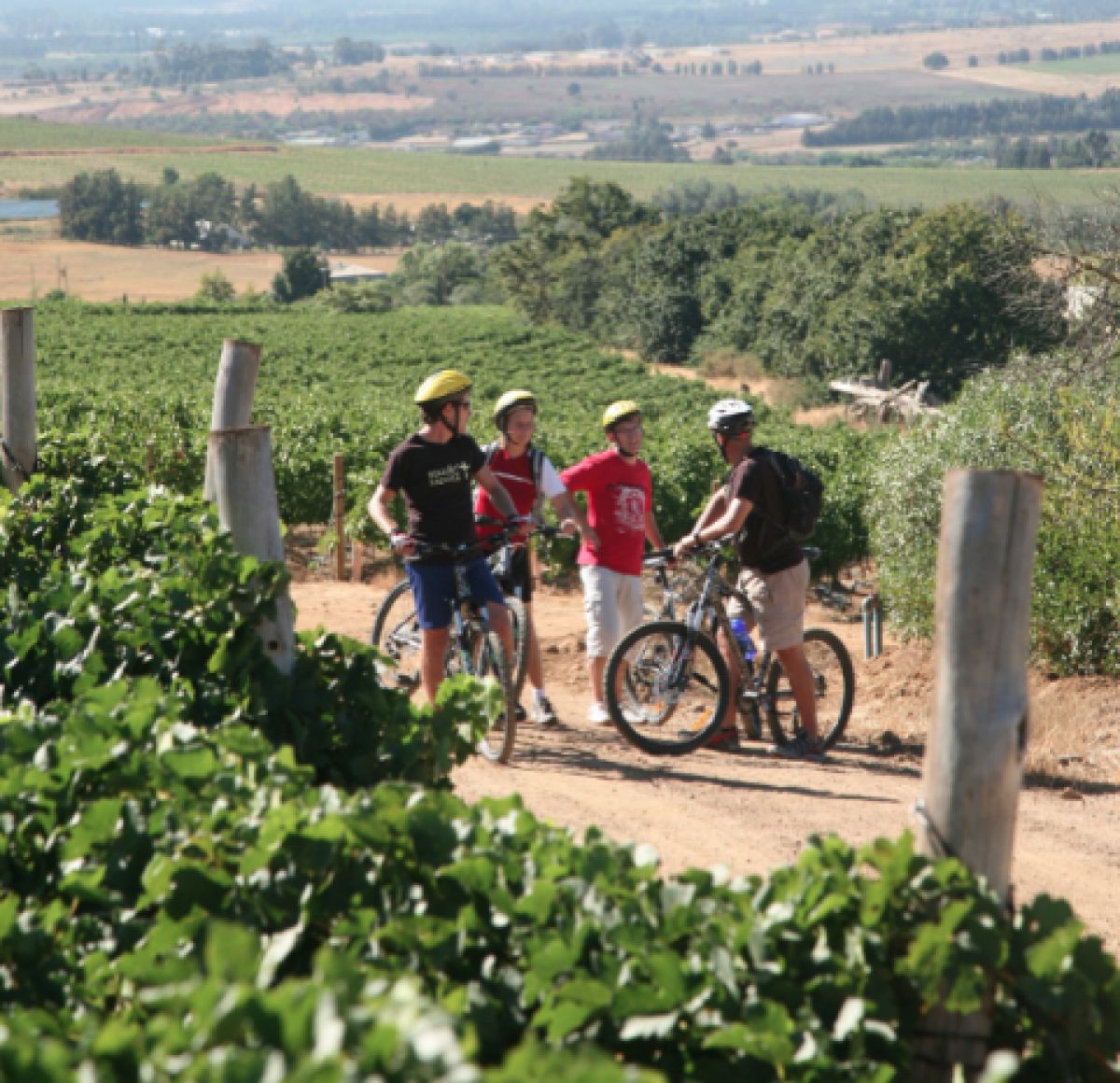Global Travel Trends released at World Travel Market 2014
by on 03.11.2014
The WTM Global Trends Report, now in its 9th year, produced in association with Euromonitor International is always a highlight in the travel and tourism calendar.
Commenting on the key findings, Caroline Bremner, Head of Travel and Tourism at Euromonitor, says: "New technology continues to disrupt as travellers connect with brands across multiple devices including mobile phones and wearables. Instant messaging is set to overtake social media for customer service, bookings and payments. Operators are responding to changing lifestyle shifts, with cycling now more popular than golf, while emerging concepts such as "poshtels" challenge the status quo. Even destinations are not afraid of a makeover with the Middle East rebranding as a design hub while Africa is the latest surfers' paradise."

Cycling tourism allows travellers to get a unique sense of the destination. (Photo courtesy of Stellenbosch Wine Routes)
Global travel and tourism continues to prosper despite the global economic slowdown, with travellers determined to explore their world in an increasingly experiential manner. 2014 is forecast to see a further growth of 4.7% after a 5.1% growth in 2013.
Asian middle and affluent classes are the biggest spenders when travelling overseas and consumers are firmly in the driving seat when it comes to where they want to travel to and how they want to interact with local destinations.
Mobile technology is transforming the tourism landscape in terms of bookings, customer service and consumer behaviour. Destination services, personalisation, mobile bookings and peer-to-peer are expected to be the main disruptive forces in the travel industry over the next five years.
Here are the key take-outs from this year's report:
1. Cycling is overtaking golf as the strongest contender for the leisure time of middle-aged men, hence the rise of MAMILs (Middle-Aged-Men-in-Lycra). Cycling tourists are lucrative, spending an average of 20% more than the average overnight traveller (Travel Oregon). Destinations like South Africa, with its wealth of outdoor locations, great weather and cycling routes, should take advantage of this trend, combining it with other growing trends like health, lifestyle and wine tourism.
"Travellers crave authentic experiences. Cycling tourism allows travellers to get a unique sense of the destination," says Mark Thomsen of Trel Travel. Michelle Duffy of DuVine Cycling + Adventure Co agrees, "We foresee more demand for high performance trips where training can be combined with experiential travel."
Providing alternatives to extreme cycling where appropriate, like comfort bikes, is appealing to the active explorer market (50+ age group), whilst targeted marketing will be key to attract this lucrative, but niche active market.

Exploring a city with a comfort bike is a great alternative. (Photo by Skye Grove)
2. There has been a growing demand for low-cost, high-value and creative accommodation options post the economic crisis. "Poshtels or design-led hostels, are gaining in popularity amongst the cost-conscious, but style-seeking consumer. Wi-Fi is considered a basic human right and establishments that embrace alternative distribution like bookings via social media and platforms like Airbnb will grow in popularity.
3. The peer-to-peer trend has taken the world, in particular Europe, by storm with consumers searching for value for money combined with more memorable and authentic experiences like in-home meals, cooking lessons and guided tours around foodie hotspots. Eating the local food of a country, ideally in the company of locals, is considered one of the best ways to discover a place and gain a new perspective on the world in which we live.
The popular Airbnb model works well for dining sites like Eatwith.com pairing travellers with home cooks at their destination. Bookalokal is a network of locals who offer meals, cooking classes and tours to travellers. It would be great to see such a model embraced in Cape Town and the Cape Winelands, home to some of South Africa's best food and wine experiences. Companies like Bites & Sites Tours and Coffeebeans Routes offer interactive tours for travellers who want to get off the bus for real people experiences.
Eating the local food of a country, ideally in the company of locals, is considered one of the best ways to discover a place. (Photo courtesy of Coffee Beans Routes)![]()
4. Wearable electronics, like Sony SmartWatch and Google Glass, will become an important tool for travellers allowing them to stay connected and make bookings as they travel. Flexibility will be key if you want to stay appealing to the "always-connected" consumers.
5. Design tourism is on the rise with destinations like the Middle East using the rise in the creative class to reposition its brand and attract a new creative-conscious traveller. Events like Design Days Dubai and Beirut Design Week have inspired the opening of a number of new "design hotels", showcasing the works of local designers and artists, helping revive Arabic culture and authenticity.
6. Another relevant trend for South Africa is that Africa is tipped to become the surfing capital of the world, its beautiful and expansive coastlines and ease of access to good waves attracting more and more youthful, sporty travellers. Surfer Today estimates that there will be 50million people surfing worldwide by 2020. South Africa is a well established surfing destination, but Sierra Leone, Liberia, Ghana and Cote d'Ivoire are expected to benefit most from the rise of surfing tourism. The spread of Ebola is, however, a major threat.

Africa is tipped to become the surfing capital of the world. (Photo courtesy of Nelson Mandela Bay Tourism)
7. According to eMarketer, social media users across the globe increased with 18% in 2013 to exceed 1.7billion users. In 2013, Facebook revealed that 350million photos were uploaded daily, while Instagram had 58million daily uploads and WhatsApp had 400million images a day.
The tourism sector has embraced social media, with those brands that use consumer content and engage their customers actively, becoming more and more popular. "Braggies" are the new Selfies, with consumers uploading pictures of themselves on holiday within a record 10 minutes of arriving at their hotel. Hotels are responding with reward and incentive programmes to boost consumer loyalty.
8. Asia is on the rise with more and more travellers embracing online travel and making mobile purchases. Instant messaging is rivalling social media and telecom companies, driven by the growth in smartphones. WeChat with an estimated 440million active users, is the second largest global messaging service after WhatsApp, but leads the pack when it comes to online payments.
Download the full report here and follow us on Twitter as we share more insights from WTM 2014.